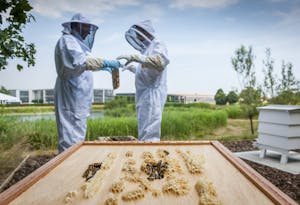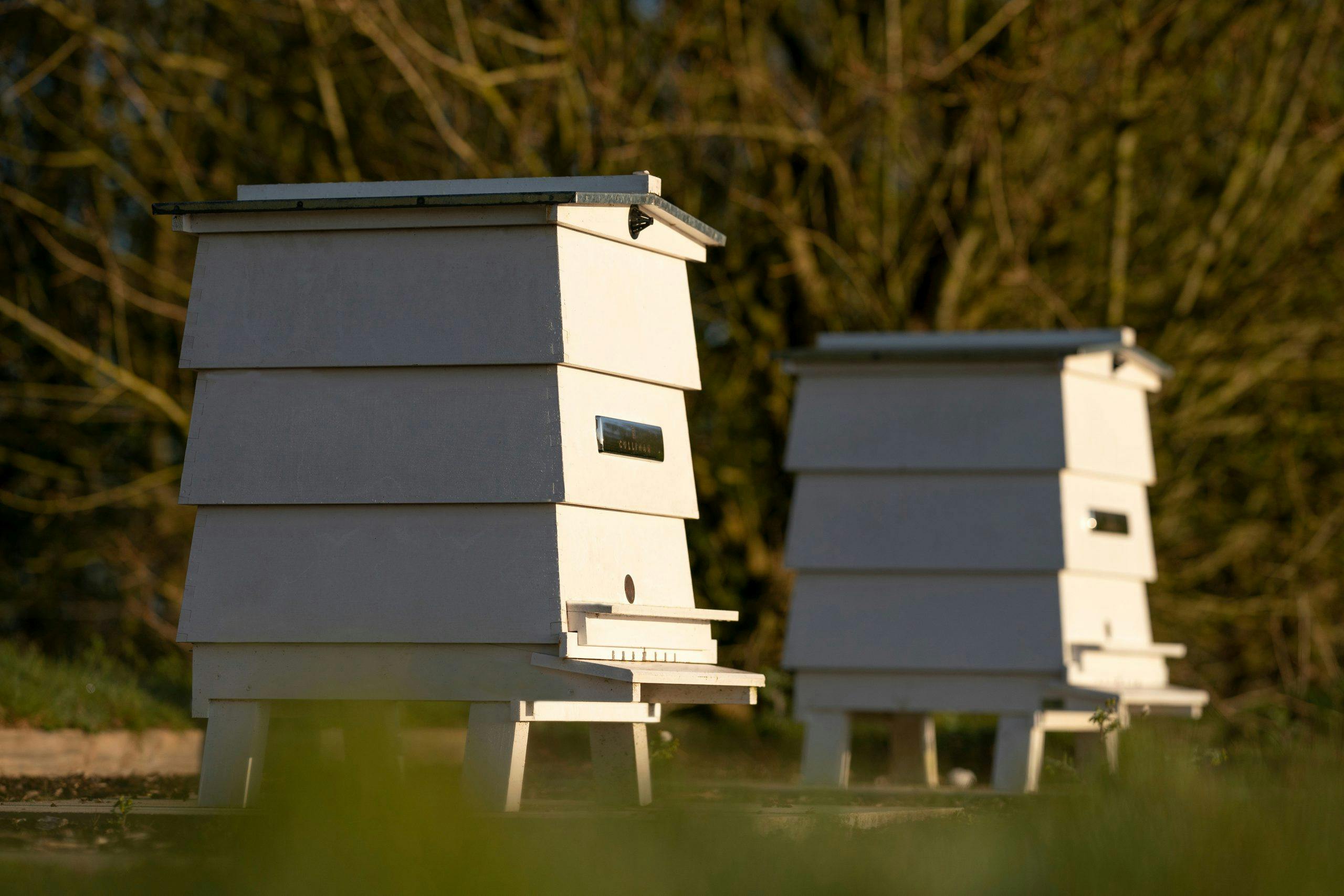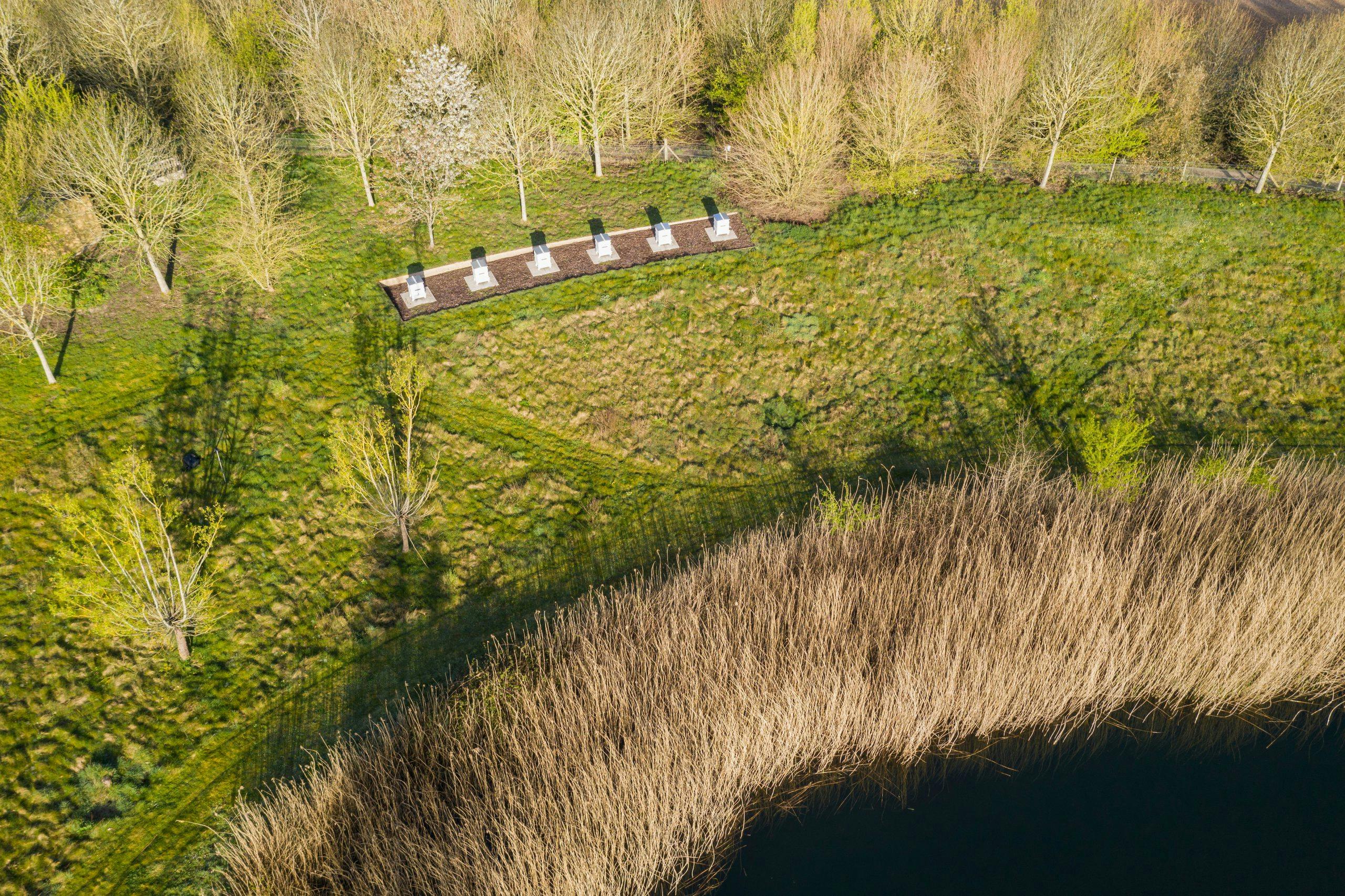Media | Articles
Rolls-Royce produces honey around the factory to save bees
Car factories demand vast pieces of land, and more often than not, it’s farmlands that get carved up into a new industrial park just outside the city. In the olden days, the story would have stopped there, but now, all sorts of creative green initiatives land on the table to make car production kinder to its local environment.
One prime example of social media-ready eco-friendliness is Porsche’s Leipzig factory, where safely separated from the plant’s off-road track, wild horses and aurochs live their happy lives. Across the water, Rolls-Royce operates with smaller creatures, producing honey to help bees and other endangered pollinator species thrive. And with quarter of a million of them buzzing around the Apiary, Goodwood proves once again that for BMW, moving Rolls-Royce to Lord March’s backyard was a grand idea.
It all happened when, after the historic Crewe plant and other Bentley assets landed in Volkswagen’s hands, BMW had to build a new Rolls-Royce factory to assemble its 2003 Phantom. Lord March invited the project to the Goodwood Estate, which next to housing the race tracks and golf courses is also home to a 12,000 acre organic farm in the West Sussex countryside, as part of the South Downs National Park. The Duke of Richmond had a few conditions before shaking hands with the German executives, of course. Namely, that that the factory couldn’t be seen from any point outside its gates, and that the building remains modular so that they could pack it up without leaving a trace, shall such a situation ever arise. The Goodwood plant lies in an “Area of Outstanding Natural Beauty.”
In the early 2000s, Eden Project architect Nicholas Grimshaw started with some landscaping to make sure the Rolls-Royce factory would satisfy all concerns. He also designed an artificial lake to provide zero-emission cooling, while the building’s roof is home to eight acres of sedum plants.

Three years ago, Rolls-Royce went further by setting up its Goodwood Apiary. This consists of six traditional wooden beehives, home to 250,000 English Honey Bees free to have a blast around half-a-million trees, shrubs, and wildflowers flourishing across the 42-acre Rolls‑Royce site plus the eight acres of the living roof—or even further out, around the Goodwood Estate’s 12,000 acres. Next to producing what Rolls-Royce refers to as “the world’s most exclusive honey,” though, this traditional activity serves a higher purpose, as explained by the factory:
Marketplace
Buy and sell classics with confidence
“The Apiary project is Rolls-Royce Motor Cars’ response to the real and present threat facing Britain’s Honey Bee population. Honey bees are the principal pollinators of numerous tree and plant species, including many of the fruit and vegetable crops that are crucial to the local agricultural economy around the Home of Rolls-Royce. However, a shortage of suitable forage, primarily caused by habitat loss, has put their numbers under great and growing pressure in recent years. The South Downs National Park, on the doorstep of the Home of Rolls-Royce, mirrors this national trend. Chalk downland, which supports pollinators including honey bees, bumblebees and the Adonis blue butterfly, now accounts for just four per cent of the National Park’s total area, in fragmented pockets that make it harder for pollinators to move through the landscape.
Through providential timing, the creation of the Apiary gave an early boost to a new South Downs National Park Trust campaign to address this critical problem. The Bee Lines initiative supports farmers and landowners in creating new flower-rich “corridors” to link areas of habitat and help bees and other pollinator species to thrive. Residents and businesses within the National Park boundaries are also being encouraged to get involved through initiatives such as planting wildflowers in gardens and grounds.”
With the bees through winter in excellent health, Rolls-Royce is now entering its third full season of honey production, ready to exceed its 2020 volume targets. What’s for sure is that with humanity (and car production) still under lockdown, honey bees can really dial up their buzzing.
















